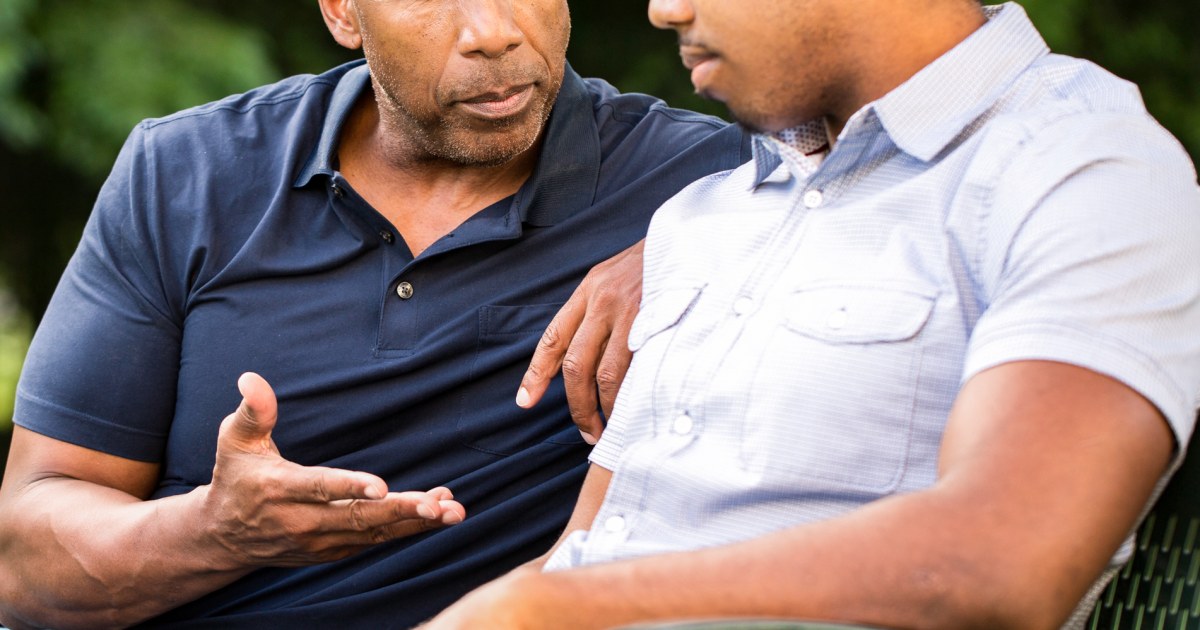By Erika Edwards -
NBC News
The recent report from the Centers for Disease Control and Prevention (CDC) finding an unprecedented surge of grief and sadness among adolescent girls revealed a staggering statistic: in 2021, almost 20% said they had been a victim of violent sexual behavior.
More than one in 10 had been raped.
Although women of all ages have long endured a disproportionate number of sexual assaults compared to men, a closer look at CDC data reveals that the number of young girls forced into sexual relations increased by nearly 200,000. in just two years.
[More Eye Products Recalled Due to Potential Bacterial Contamination]
The CDC's Youth Risk Behavior survey is administered to more than 17,000 American high school students every two years.
Based on responses in 2019, an estimated 850,000 high school girls reported being raped.
By 2021, that estimate has ballooned to more than a million.
Dr. Debra Houry, the agency's chief medical officer, was disheartened by the steep increase, but not surprised.
This is the brand of baby formula that is withdrawn from the market due to possible contamination
Feb 22, 202300:22
“Sexual violence has been a widespread problem among girls for quite some time.
We are not making the progress we need to,” Houry said.
The percentage of boys who declare having been raped in 2021 has remained the same -4%- since 2011.
[The birth control pill for men: why is it new and how close is it to being a reality?]
The CDC survey did not ask teens about the circumstances of the assaults or where they occurred.
Although sexual assaults have been known to occur in schools, most teens spent most of 2020 and 2021 at home due to the coronavirus pandemic.
How the pandemic increased vulnerability
And home is not always a safe haven for the young.
“Much of the sexual assault and abuse occurs by people known to young people, whether they are family members or close relations,” explains Dr. Willough Jenkins, medical director of emergency liaison psychiatry and consultations at Rady Children's Hospital in San Diego.
“The pandemic did not limit exposure to these people, but in some cases increased it due to confinement at home,” he explained.
The pandemic also increased the vulnerability of adolescents to violence in other ways.
Distance schooling tended to leave them isolated from friends and trusted teachers or coaches with whom they might have sought help or advice.
The children were spending an unusual amount of time online, on social media.
[These are the best foods to avoid to keep diabetes in check]
“We have learned from several of the rape crisis programs that we work with throughout New York City, and from several of the youth programs specifically, that rates of cybersexual violence have increased dramatically over the course of the pandemic.” said Emily Miles, executive director of the Alliance Against Sexual Assault of New York City.
Cybersexual violence includes online sexual harassment and stalking, as well as repeated messages and threats of sexual assault.
Sex education in schools, if it was provided before the pandemic, was reduced or abolished entirely, as teachers tried to focus on the basics of reading and math.
Norovirus cases increase in record numbers
Feb 10, 202300:24
Alcohol and drug use increased among adults.
Families lost their jobs.
Stressed moms, dads and other caregivers called names, put downs and perpetrated other forms of emotional abuse during the height of the lockdown in 2020, teens said in an earlier CDC report on teen behavior and experiences.
“The usual safety nets for our young people are being disrupted,” says Dr. Elizabeth Miller, a violence prevention researcher and director of adolescent and young adult medicine at UPMC, Children's Hospital Pittsburgh, and the College of of Medicine from the University of Pittsburgh.
“When there is this level of structural and social disruption in the lives of children and youth, there is greater exposure to all forms of violence.”
[The risks of sitting too long and how to repair the damage to health]
The 2021 CDC report also found that, overall, girls and boys equally reported being threatened or hurt at school (6% and 7%, respectively).
But girls were more likely than boys to say they were too afraid to go to school because they felt unsafe in class or while traveling to and from school.
Going deeper, the increase in girls reporting assaults may reflect a growing ease and empowerment to speak up.
“Since the #MeToo movement, I think more and more people are talking about it,” says Ellie Hinkle, 17, a senior from Charlotte, North Carolina.
Still, he said, "it's super hard."
Hinkle believes the numbers of teens reporting sexual assault in the 2021 CDC report are underestimates.
"It's just people who report, but there are many who are too scared," he said.
[Study Reveals Quitting Exercise Is Linked to Memory Loss and Brain Health]
For some young women, the movement has provided support and community, Miles said.
“But there are also incredibly strong voices on the other side that stigmatize and hurt survivors when they come forward,” Miles said.
Houry of the CDC, who has been a sexual violence researcher, stated flatly: "We want to be clear: the girls are not to blame."
Early education is key
More than half of women will experience some form of sexual violence in their lifetime.
Most occur before the age of 25, Houry said.
“The patterns that you see in colleges are ingrained in middle and high school,” Miles said.
"Unless we're really able to have those conversations sooner, we're going to continue this same cycle of violence over and over again."
The CDC report called for an increase in school programs such as sex education to help curb sexual violence.
The Guttmacher Institute, a group that advocates for reproductive rights and health, says that only 38 states and Washington DC require sex education in schools.
However, not all sex education classes have the same requirements.
“We really don't have strong, evidence-based, supportive, trauma-informed education in America.
And at this particular time in history, it's especially necessary given what we're seeing,” says LB Klein, an associate professor at the University of Wisconsin, Madison.
Such a curriculum would fall under what is known as comprehensive sex education.
[Maintaining your weight during menopause is possible and a doctor explains how to achieve it]
Comprehensive sex education “isn't limited to condom use,” says Miles.
It's about "educating our youth about healthy relationships and consent, affirmative consent, and how to navigate those conversations early on."
The extra assistance from SNAP is about to expire.
This will impact the beneficiaries
Feb 23, 202301:45
The National Sexual Violence Resource Center encourages these kinds of conversations to start with age-appropriate language in kindergarten.
One way to do that is to “help young people recognize when they've been hurt and get an idea of what those red flags are in relationships,” Klein said.
Despite the worrying rise in sexual assaults among girls, boys also need a well-rounded education, said Neil Irvin, executive director of MCSR (formerly known as Men Can Stop Rape).
The mission of the program is to show men that sexual violence is not just a women's thing.
"Kids are inundated with images of unhealthy examples of humanity in all areas, whether it's sexual or not," says Irvin.
“We need more resources for the boys.”
What can parents do?
Jenkins, of San Diego's Rady Children's Hospital, has some advice for parents who don't know when or how to bring up sexual violence with their teens.
“The best thing is to be sincere, frank and very clear.
Our children know about this.
They are living it.
They have friends who go through this.
It's not a secret," Jenkins said.
“Talking about sexual assault doesn't put anyone at higher risk of experiencing those things,” she added.
[Watch out for the louse! Follow these tips to prevent your children from getting it]
Houry encourages mothers, fathers and other trusted caregivers to use direct and appropriate language, such as “we want to make sure you are safe.
You should never be forced to do anything you don't want to do.
If something happens, come to us."
Ask questions, says Jenkins, and then listen to the answers.
“Make sure your child or young person talks more than you do.
No child likes a sermon."
Above all else, the experts advised keeping a strong and positive attitude.
“Our children are not broken,” said UPMC's Miller.
“With the right support, all of us coming together to say that our youth deserve more, and that we have the resources, the love and the intention to do the right thing for our youth, they will bounce back.”









/cloudfront-eu-central-1.images.arcpublishing.com/prisa/KMEYMJKESBAZBE4MRBAM4TGHIQ.jpg)


